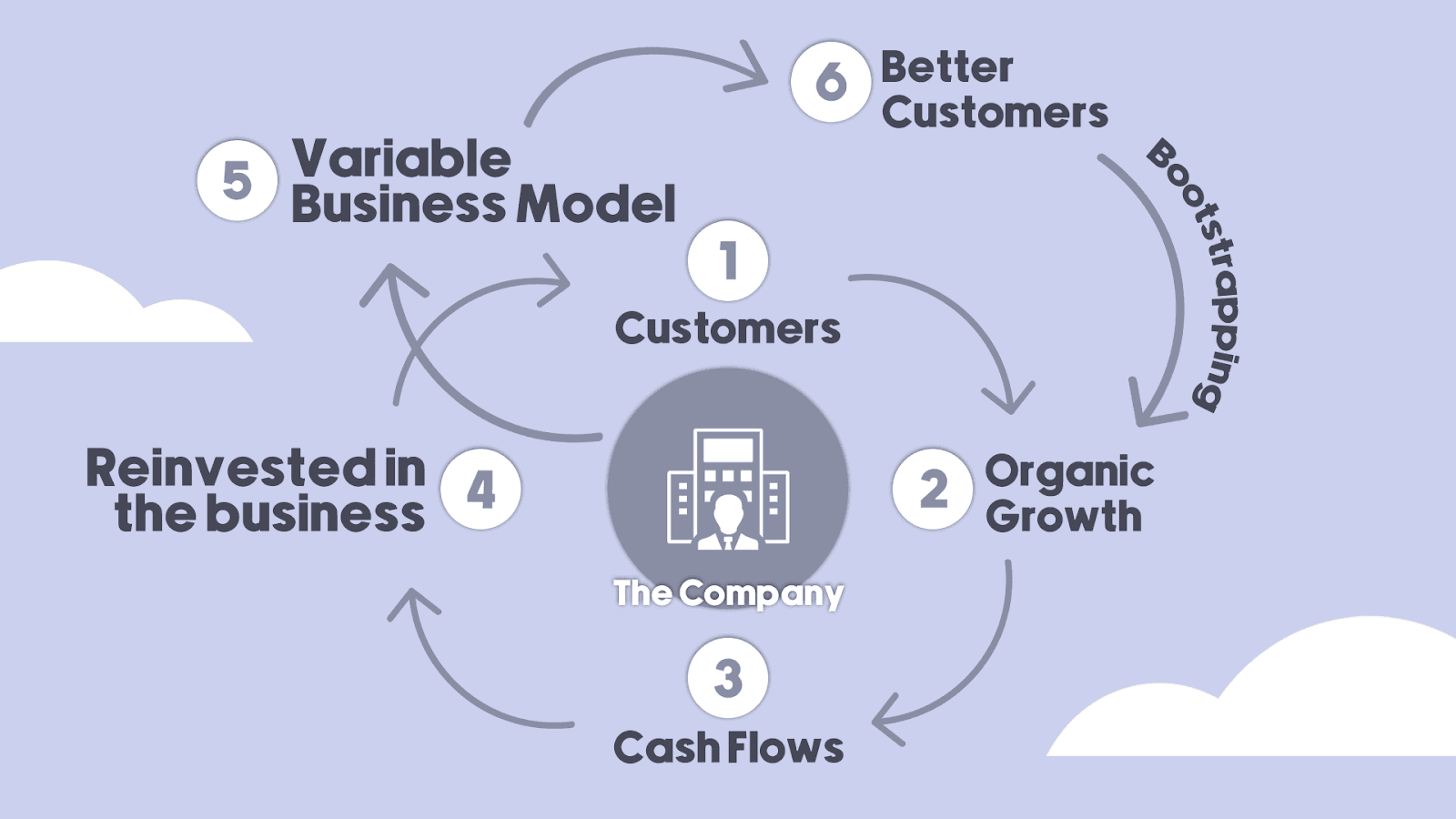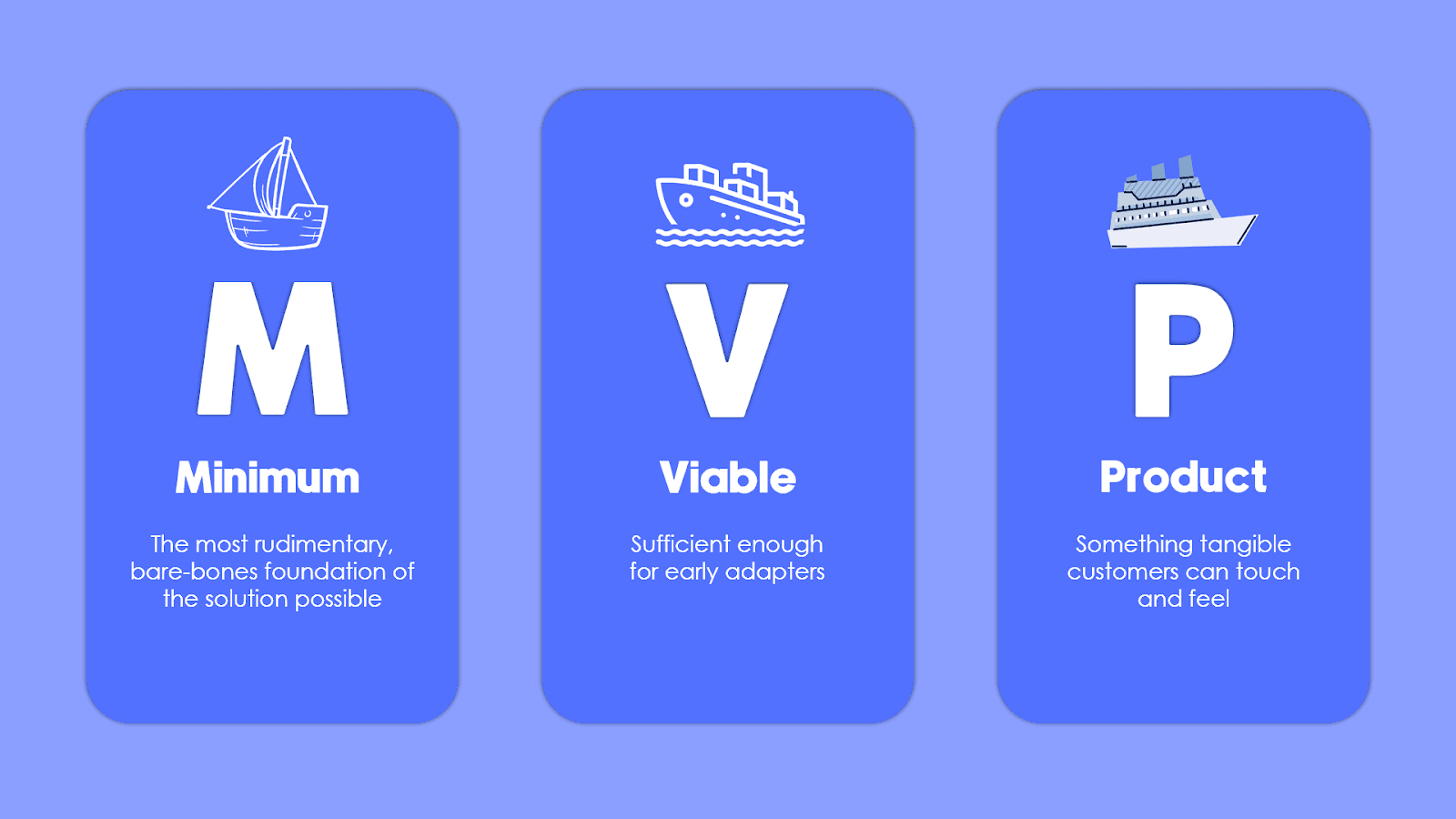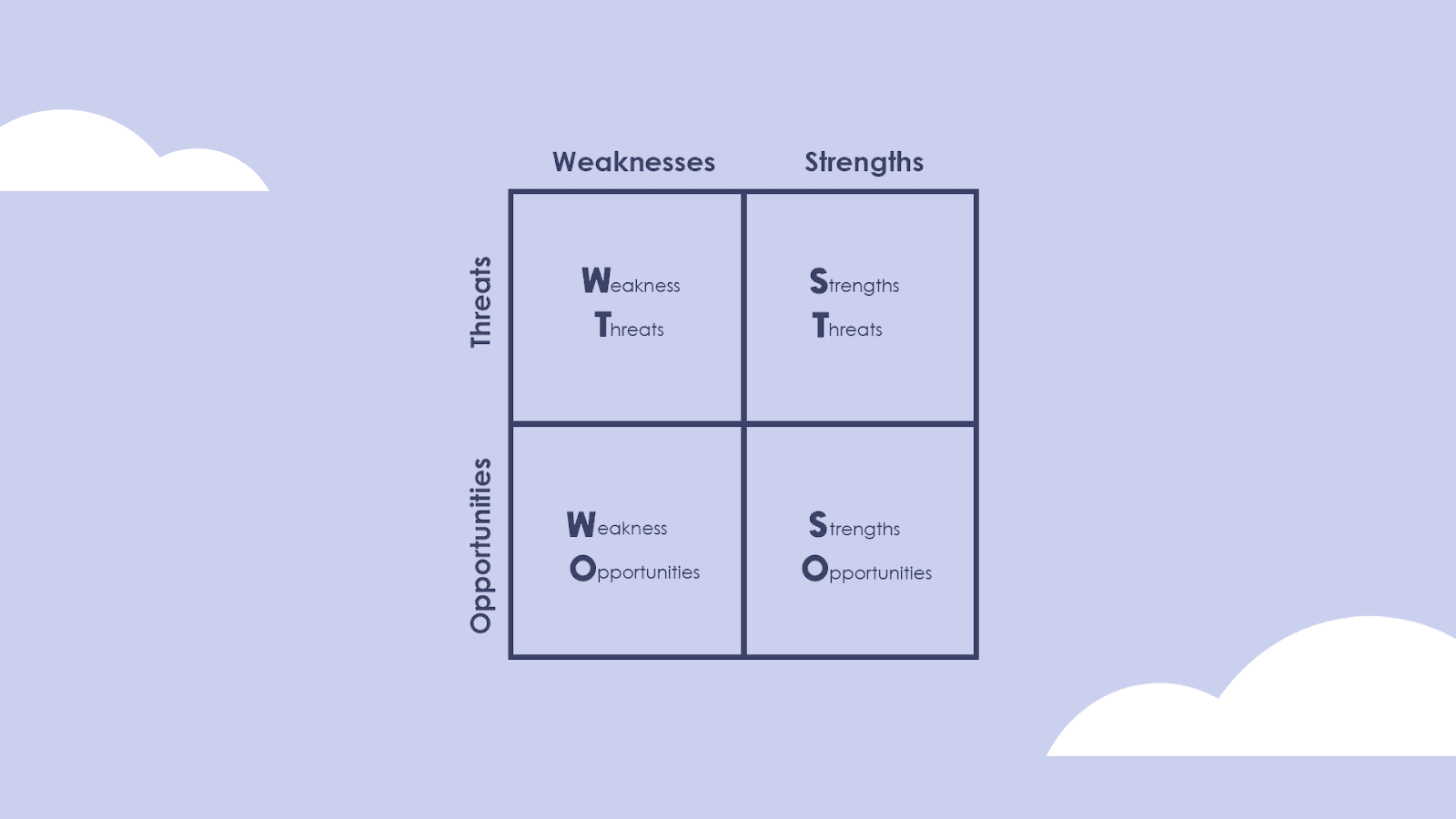Jul 14, 2023
Indie Hackers Unite: Building Profitable Micro-SaaS Businesses from Scratch

Have you ever dreamed of building a profitable online business from scratch on your terms? That's what the indie hacker community is all about. We will explore this community of indie hackers, sharing inspiring stories and insights from successful individuals and covering challenges. We will provide practical tips and strategies for aspiring indie hackers to equip them with the knowledge and tools to start and grow their ventures.
The Success Story
In an industry dominated by giants like Photoshop, want to know how one developer built a successful online photo editor?
The Inspiring Journey of Ivan Kuckir: Building Photopea from Passion to Profit

Consistency, Customer-Centricity, and Building What People Want
Ivan Kuckir, the solo founder of Photopea, an online photo editor, exemplifies the power of dedication and customer-centricity in achieving extraordinary success. He is the visionary behind Photopea, a free web-based graphic software competing with established tools like Photoshop. Photopea started as an experiment but has been a success for Ivan. From one indie hacker to another, Ivan shares his insights and experiences in an interview excerpt below from indie hackers.
Numbers that Speak Volumes
Photopea started by letting users leverage its features for free. However, after monetizing the tool, Ivan witnessed continuous revenue growth, surpassing the $500,000 ARR milestone last year.
Unconventional Monetization
Photopea's primary revenue stream comes from ads. He also offers license deals, enabling users to integrate Photopea into their projects for a monthly fee. From his success and learnings in online games, where banner ads served as a profitable revenue model, Ivan has cleverly implemented ads to support his passion project.
Impressive Stats
With 300,000 daily users and 45,000 hours spent on Photopea each day, Ivan has built a substantial user base.
Moreover, his server costs remain astonishingly low at just $45 per year. By rendering the tool entirely in the user's browser, he eliminates the need for a database or backend. He manages the entire project single-handedly, dispelling the myth that solo founders are disadvantaged. It's a tool's quality of output and usability that makes it functional and scalable.
From MVP to Success

Photopea started as a simple experiment, focusing on parsing Photoshop files. Ivan advises aspiring founders to start with a minimal viable product (MVP) and iterate based on user feedback. Launching early allows for refinement and improvement based on real-world usage. People using your tool would always share feedback.
Building What People Want
User feedback and feature requests shaped Photopea's development roadmap. Because why not just ask the end users what they want?
Ivan prioritized user requests and strived to build what the users genuinely desired, and it was indeed received well. His marketing strategy relies on creating a tool people genuinely enjoy using and leveraging word-of-mouth for promotion.
Lessons Learnt and Final Advice
Ivan faced challenges, including an outage that impacted users. He advises aspiring founders to embrace consistency, customer-centricity, and launching projects before they are perfect. User feedback is a catalyst for improvement and success.
Ivan Kuckir's journey with Photopea showcases the power of persistence and putting customers at the forefront. By building what people want and leveraging unconventional monetization methods, Ivan transformed his passion project into a profitable venture. His story inspires entrepreneurs to chase their dreams, continuously iterate, and build products that resonate with users.
Want to learn the secrets behind Ivan's remarkable success? Read on!
Practical Strategies for Aspiring Indie Hackers
You have to be aware of the cheat codes to utilize them.
Finding the Right Niche

Finding the right niche is one of the most critical steps in building a successful micro-SaaS business. When starting out, it is crucial to focus on a specific market or problem you can solve. This will help you target your marketing efforts and attract the right customers.
Identifying an underserved niche allows you to differentiate yourself from competitors and establish a strong position in the market. Conduct thorough research to understand the pain points of your target audience and determine how your product or service can address those needs effectively. By catering to a specific niche, you can tailor your offering to meet their unique requirements, providing them with a solution that resonates with their specific challenges.
Bootstrapping for Growth

Bootstrapping refers to starting and growing your business with limited financial resources, relying on your funds or revenue generated by the business. While this can be a challenge, it is also an opportunity to learn how to be resourceful and efficient.
Bootstrapping forces you to prioritize your expenses and focus on essential aspects of your business. It encourages you to be creative in finding cost-effective solutions and encourages a lean approach to operations. By managing your finances wisely and keeping costs low, you can achieve profitability faster and retain complete control over your business.
For founders to bootstrap effectively, consider the following strategies

1. Start small: Begin with a minimal viable product (MVP) that addresses the core needs of your target audience. This allows you to validate your idea and generate early revenue while managing development costs.
2. Maximize your existing skills: Leverage your expertise and skills to handle various aspects of your business. This reduces the need for external help, saving costs in the initial stages.
3. Embrace lean marketing: Focus on low-cost and high-impact marketing tactics such as content marketing, social media, and organic search engine optimization (SEO). Utilize your network and establish partnerships to reach a wider audience without significant financial investment.
4. Optimize cash flow: Monitor your cash flow closely and implement strategies to improve it. Negotiate favorable payment terms with suppliers, incentivize early customer payments, and streamline your invoicing and collections process.

Remember, bootstrapping is not about cutting corners or sacrificing quality. It is about being resourceful, efficient, and strategic in managing your resources to achieve sustainable growth.
Building a Supportive Community
The Indie Hacker Community is a vibrant and supportive network of like-minded entrepreneurs. Engaging with this community can provide valuable insights, support, and connections that can help accelerate your journey.
Here are some ways to build a supportive community as an indie hacker:
1. Online Forums and Communities: Join online communities like Indie Hackers, Reddit's r/entrepreneur, or specialized forums dedicated to micro-SaaS or indie businesses. Actively participate, ask questions, share your experiences, and provide help and guidance to others.
2. Attend Meetups and Events: Look for local meetups, conferences, and events related to entrepreneurship and micro-SaaS. These gatherings offer opportunities to connect with fellow indie hackers, exchange ideas, and build relationships.
3. Collaborate and Network: Seek collaboration opportunities with other indie hackers or complementary businesses. By working together, you can leverage each other's strengths and expand your reach. Networking events and conferences are excellent places to meet potential collaborators and form mutually beneficial partnerships.
4. Share and Learn: Contribute to the community by sharing your experiences, insights, and lessons. Write blog posts, create video tutorials, or host webinars to share your expertise. This positions you as an authority in your niche and helps build your brand.

Building a supportive community is not just about taking but also about giving. Be generous with your knowledge and support others on their entrepreneurial journeys. The relationships you build within the community can lead to valuable opportunities, feedback, and even potential customers.
Advantages and Challenges of the indie hacker Approach
The indie hacker approach offers unique advantages contributing to its popularity among entrepreneurs. Understanding the advantages can help aspiring indie hackers better align their strategies and expectations:
1. Flexibility and Autonomy: As an indie hacker, you can make decisions and steer your business in the direction you desire. There are no corporate hierarchies or external stakeholders to answer to, allowing you to be agile and adaptive in responding to market changes.
2. Profit Potential: With the right idea, execution, and market fit, indie hackers have the potential to generate significant profits. Since they typically operate with lower overhead costs and don't have to share profits with investors, they can retain a more significant portion of the revenue they generate.

3. Full Ownership and Control: indie hackers retain full ownership and control over their businesses. This means you can shape the company culture, product roadmap, and overall vision according to your values and preferences.
4. Learning and Growth Opportunities: Building a micro-SaaS business from scratch requires acquiring diverse skills, from product development to marketing and customer support. This hands-on experience can lead to personal and professional growth, making indie hackers well-rounded entrepreneurs.
SWOT Analysis for indie hackers: Identifying Strengths, Weaknesses, Opportunities, and Threats
In indie hackers, conducting a SWOT analysis can be a valuable exercise to gain insights into the business model and make informed decisions.

1. Strengths
Recognizing and capitalizing on your strengths as an indie hacker can give you a competitive edge. These could include:
A. Agility and Flexibility: Being a solo entrepreneur allows you to quickly adapt to market changes and customer needs without the bureaucracy of larger companies.
B. Niche Expertise: indie hackers often have deep knowledge and passion for their chosen niche, enabling them to build unique and valuable products.
C. Direct Customer Interaction: indie hackers can directly communicate with their customers, fostering better relationships and understanding their pain points.
D. Low Overheads: Operating solo or with a small team, indie hackers can keep overhead costs low, allowing for better financial sustainability.
2. Weaknesses
Understanding your weaknesses is crucial to address potential pitfalls and outlining the scope of improvement:
A. Limited Resources: As a one-person or small team operation, resources may be limited compared to well-funded startups.
B. Skill Gaps: indie hackers may lack specific skills needed for marketing, design, or development, leading to challenges in those areas.
C. Time Constraints: Balancing multiple roles can be overwhelming, impacting product development and customer support.
D. Market Presence: Competing with established players may be challenging due to brand recognition and customer loyalty.
3. Opportunities
Identifying opportunities helps indie hackers grow and expand their businesses:
A. Niche Markets: indie hackers can identify untapped niche markets that larger companies may overlook.
B. Emerging Trends: Being nimble, indie hackers can spot and capitalize on emerging trends quicker than larger competitors.
C. Collaborations: Building connections within the indie hacker community can lead to potential partnerships and joint ventures.
D.Product Diversification: Exploring additional products or features can help diversify revenue streams.
4. Threats
Awareness of potential threats can help indie hackers proactively address challenges:
A. Competition: Larger companies or well-funded startups might enter the same market, intensifying competition.
B. Market Saturation: Entering an oversaturated market may make it difficult to stand out.
C. Economic Changes: Economic downturns or fluctuations can impact consumer spending and demand.
D. Changing Technology: Failing to adapt to changing technology could render a product outdated.
Now that you’re aware of some of the challenges, here’s how to mitigate them.
Potential Challenges and Mitigation Strategies for indie hackers
1. Time Management
As a one-person operation, time management becomes critical. Balancing product development, marketing, customer support, and administrative tasks can be overwhelming.
Mitigation Strategies:
A. Prioritize Tasks: Focus on high-impact tasks and delegate or automate less critical activities.
B. Time Blocking: Set aside dedicated time blocks for different tasks to maintain focus and avoid burnout.
2. Limited Resources
Indie hackers often have limited financial resources, manpower, and access to professional networks compared to larger companies.
Mitigation Strategies:
A. Leverage Free and Low-Cost Tools: Explore free or affordable tools and resources available for various aspects of your business, such as project management, marketing, and design.
B. Outsource or Automate: Identify tasks that can be outsourced or automated to save time and resources. This could include hiring freelancers for specific projects or using automation tools for repetitive tasks.
C. Tap into the indie hacker Community: Engage with other hackers to share knowledge, collaborate, and seek advice on cost-effective strategies and solutions.
3. Building and Scaling a User Base
Attracting and retaining customers can be challenging, especially when competing against established players in the market.
Mitigation Strategies:
A. Identify and Target Niche Markets: Focus on a specific niche and tailor your product to meet their unique needs. This allows you to differentiate yourself from larger competitors.
B. Build an Engaged Community: Foster a strong community around your product through social media, forums, and email newsletters. Encourage user engagement, provide valuable content, and listen to customer feedback.
C. Implement Growth Hacking Strategies: Experiment with creative marketing tactics such as referral programs, content marketing, influencer partnerships, and strategic collaborations to generate buzz and attract users.
4. Scaling the Product and Infrastructure
As your user base grows, scalability becomes crucial. Scaling the product and infrastructure to handle increased demand can be a significant challenge for indie hackers.
Mitigation Strategies:
A. Design for Scalability: Architect your product and infrastructure with scalability in mind initially. Use scalable technologies and cloud-based services to accommodate growth.
B. Optimize Performance: Continuously monitor and optimize your product's performance to ensure it can handle increased usage. Identify and address any bottlenecks or performance issues.
C. Invest in Backend Infrastructure: As your user base expands, consider investing in scalable backend infrastructure and resources to ensure a seamless user experience.
5. Competition and Differentiation
Indie hackers often operate in competitive markets where differentiation is crucial for success.
Mitigation Strategies:
A. Focus on Unique Value Proposition: Clearly define your product's unique value proposition and communicate it effectively to your target audience.
B. Continuous Improvement and Innovation: Regularly enhance and innovate your product based on user feedback and market trends. Stay ahead of the competition by offering features and experiences that set you apart.
C. Build Strong Branding: Develop a strong brand identity and establish an emotional connection with your audience. This helps create loyalty and differentiation beyond product features alone.
Conclusion

Success doesn't have to be a lonely journey. Indie hackers have proven that with passion, dedication, and the right approach, it is possible to build profitable micro-SaaS businesses from scratch. Their stories of success and innovation inspire and guide aspiring entrepreneurs on their journeys to create impactful ventures.
By finding the right niche, embracing bootstrapping, building a supportive community, and leveraging the advantages of the indie hacker approach, you can set yourself up for a rewarding entrepreneurial experience. Remember to stay customer-centric, continually iterate based on feedback, and remain adaptable in the ever-evolving business landscape.
As you embark on your indie hacker journey, challenges are inevitable, but they present opportunities for growth and learning. Embrace them with a resilient mindset, and use each experience to refine your strategies and vision. It's always a good day when you’re learning something new!
So, unite with fellow indie hackers, harness your creativity and the supportive community to start building your own profitable micro-SaaS business today. The possibilities are limitless, and success awaits those who dare to leap into the world of indie entrepreneurship.
Jul 14, 2023
Indie Hackers Unite: Building Profitable Micro-SaaS Businesses from Scratch

Have you ever dreamed of building a profitable online business from scratch on your terms? That's what the indie hacker community is all about. We will explore this community of indie hackers, sharing inspiring stories and insights from successful individuals and covering challenges. We will provide practical tips and strategies for aspiring indie hackers to equip them with the knowledge and tools to start and grow their ventures.
The Success Story
In an industry dominated by giants like Photoshop, want to know how one developer built a successful online photo editor?
The Inspiring Journey of Ivan Kuckir: Building Photopea from Passion to Profit

Consistency, Customer-Centricity, and Building What People Want
Ivan Kuckir, the solo founder of Photopea, an online photo editor, exemplifies the power of dedication and customer-centricity in achieving extraordinary success. He is the visionary behind Photopea, a free web-based graphic software competing with established tools like Photoshop. Photopea started as an experiment but has been a success for Ivan. From one indie hacker to another, Ivan shares his insights and experiences in an interview excerpt below from indie hackers.
Numbers that Speak Volumes
Photopea started by letting users leverage its features for free. However, after monetizing the tool, Ivan witnessed continuous revenue growth, surpassing the $500,000 ARR milestone last year.
Unconventional Monetization
Photopea's primary revenue stream comes from ads. He also offers license deals, enabling users to integrate Photopea into their projects for a monthly fee. From his success and learnings in online games, where banner ads served as a profitable revenue model, Ivan has cleverly implemented ads to support his passion project.
Impressive Stats
With 300,000 daily users and 45,000 hours spent on Photopea each day, Ivan has built a substantial user base.
Moreover, his server costs remain astonishingly low at just $45 per year. By rendering the tool entirely in the user's browser, he eliminates the need for a database or backend. He manages the entire project single-handedly, dispelling the myth that solo founders are disadvantaged. It's a tool's quality of output and usability that makes it functional and scalable.
From MVP to Success

Photopea started as a simple experiment, focusing on parsing Photoshop files. Ivan advises aspiring founders to start with a minimal viable product (MVP) and iterate based on user feedback. Launching early allows for refinement and improvement based on real-world usage. People using your tool would always share feedback.
Building What People Want
User feedback and feature requests shaped Photopea's development roadmap. Because why not just ask the end users what they want?
Ivan prioritized user requests and strived to build what the users genuinely desired, and it was indeed received well. His marketing strategy relies on creating a tool people genuinely enjoy using and leveraging word-of-mouth for promotion.
Lessons Learnt and Final Advice
Ivan faced challenges, including an outage that impacted users. He advises aspiring founders to embrace consistency, customer-centricity, and launching projects before they are perfect. User feedback is a catalyst for improvement and success.
Ivan Kuckir's journey with Photopea showcases the power of persistence and putting customers at the forefront. By building what people want and leveraging unconventional monetization methods, Ivan transformed his passion project into a profitable venture. His story inspires entrepreneurs to chase their dreams, continuously iterate, and build products that resonate with users.
Want to learn the secrets behind Ivan's remarkable success? Read on!
Practical Strategies for Aspiring Indie Hackers
You have to be aware of the cheat codes to utilize them.
Finding the Right Niche

Finding the right niche is one of the most critical steps in building a successful micro-SaaS business. When starting out, it is crucial to focus on a specific market or problem you can solve. This will help you target your marketing efforts and attract the right customers.
Identifying an underserved niche allows you to differentiate yourself from competitors and establish a strong position in the market. Conduct thorough research to understand the pain points of your target audience and determine how your product or service can address those needs effectively. By catering to a specific niche, you can tailor your offering to meet their unique requirements, providing them with a solution that resonates with their specific challenges.
Bootstrapping for Growth

Bootstrapping refers to starting and growing your business with limited financial resources, relying on your funds or revenue generated by the business. While this can be a challenge, it is also an opportunity to learn how to be resourceful and efficient.
Bootstrapping forces you to prioritize your expenses and focus on essential aspects of your business. It encourages you to be creative in finding cost-effective solutions and encourages a lean approach to operations. By managing your finances wisely and keeping costs low, you can achieve profitability faster and retain complete control over your business.
For founders to bootstrap effectively, consider the following strategies

1. Start small: Begin with a minimal viable product (MVP) that addresses the core needs of your target audience. This allows you to validate your idea and generate early revenue while managing development costs.
2. Maximize your existing skills: Leverage your expertise and skills to handle various aspects of your business. This reduces the need for external help, saving costs in the initial stages.
3. Embrace lean marketing: Focus on low-cost and high-impact marketing tactics such as content marketing, social media, and organic search engine optimization (SEO). Utilize your network and establish partnerships to reach a wider audience without significant financial investment.
4. Optimize cash flow: Monitor your cash flow closely and implement strategies to improve it. Negotiate favorable payment terms with suppliers, incentivize early customer payments, and streamline your invoicing and collections process.

Remember, bootstrapping is not about cutting corners or sacrificing quality. It is about being resourceful, efficient, and strategic in managing your resources to achieve sustainable growth.
Building a Supportive Community
The Indie Hacker Community is a vibrant and supportive network of like-minded entrepreneurs. Engaging with this community can provide valuable insights, support, and connections that can help accelerate your journey.
Here are some ways to build a supportive community as an indie hacker:
1. Online Forums and Communities: Join online communities like Indie Hackers, Reddit's r/entrepreneur, or specialized forums dedicated to micro-SaaS or indie businesses. Actively participate, ask questions, share your experiences, and provide help and guidance to others.
2. Attend Meetups and Events: Look for local meetups, conferences, and events related to entrepreneurship and micro-SaaS. These gatherings offer opportunities to connect with fellow indie hackers, exchange ideas, and build relationships.
3. Collaborate and Network: Seek collaboration opportunities with other indie hackers or complementary businesses. By working together, you can leverage each other's strengths and expand your reach. Networking events and conferences are excellent places to meet potential collaborators and form mutually beneficial partnerships.
4. Share and Learn: Contribute to the community by sharing your experiences, insights, and lessons. Write blog posts, create video tutorials, or host webinars to share your expertise. This positions you as an authority in your niche and helps build your brand.

Building a supportive community is not just about taking but also about giving. Be generous with your knowledge and support others on their entrepreneurial journeys. The relationships you build within the community can lead to valuable opportunities, feedback, and even potential customers.
Advantages and Challenges of the indie hacker Approach
The indie hacker approach offers unique advantages contributing to its popularity among entrepreneurs. Understanding the advantages can help aspiring indie hackers better align their strategies and expectations:
1. Flexibility and Autonomy: As an indie hacker, you can make decisions and steer your business in the direction you desire. There are no corporate hierarchies or external stakeholders to answer to, allowing you to be agile and adaptive in responding to market changes.
2. Profit Potential: With the right idea, execution, and market fit, indie hackers have the potential to generate significant profits. Since they typically operate with lower overhead costs and don't have to share profits with investors, they can retain a more significant portion of the revenue they generate.

3. Full Ownership and Control: indie hackers retain full ownership and control over their businesses. This means you can shape the company culture, product roadmap, and overall vision according to your values and preferences.
4. Learning and Growth Opportunities: Building a micro-SaaS business from scratch requires acquiring diverse skills, from product development to marketing and customer support. This hands-on experience can lead to personal and professional growth, making indie hackers well-rounded entrepreneurs.
SWOT Analysis for indie hackers: Identifying Strengths, Weaknesses, Opportunities, and Threats
In indie hackers, conducting a SWOT analysis can be a valuable exercise to gain insights into the business model and make informed decisions.

1. Strengths
Recognizing and capitalizing on your strengths as an indie hacker can give you a competitive edge. These could include:
A. Agility and Flexibility: Being a solo entrepreneur allows you to quickly adapt to market changes and customer needs without the bureaucracy of larger companies.
B. Niche Expertise: indie hackers often have deep knowledge and passion for their chosen niche, enabling them to build unique and valuable products.
C. Direct Customer Interaction: indie hackers can directly communicate with their customers, fostering better relationships and understanding their pain points.
D. Low Overheads: Operating solo or with a small team, indie hackers can keep overhead costs low, allowing for better financial sustainability.
2. Weaknesses
Understanding your weaknesses is crucial to address potential pitfalls and outlining the scope of improvement:
A. Limited Resources: As a one-person or small team operation, resources may be limited compared to well-funded startups.
B. Skill Gaps: indie hackers may lack specific skills needed for marketing, design, or development, leading to challenges in those areas.
C. Time Constraints: Balancing multiple roles can be overwhelming, impacting product development and customer support.
D. Market Presence: Competing with established players may be challenging due to brand recognition and customer loyalty.
3. Opportunities
Identifying opportunities helps indie hackers grow and expand their businesses:
A. Niche Markets: indie hackers can identify untapped niche markets that larger companies may overlook.
B. Emerging Trends: Being nimble, indie hackers can spot and capitalize on emerging trends quicker than larger competitors.
C. Collaborations: Building connections within the indie hacker community can lead to potential partnerships and joint ventures.
D.Product Diversification: Exploring additional products or features can help diversify revenue streams.
4. Threats
Awareness of potential threats can help indie hackers proactively address challenges:
A. Competition: Larger companies or well-funded startups might enter the same market, intensifying competition.
B. Market Saturation: Entering an oversaturated market may make it difficult to stand out.
C. Economic Changes: Economic downturns or fluctuations can impact consumer spending and demand.
D. Changing Technology: Failing to adapt to changing technology could render a product outdated.
Now that you’re aware of some of the challenges, here’s how to mitigate them.
Potential Challenges and Mitigation Strategies for indie hackers
1. Time Management
As a one-person operation, time management becomes critical. Balancing product development, marketing, customer support, and administrative tasks can be overwhelming.
Mitigation Strategies:
A. Prioritize Tasks: Focus on high-impact tasks and delegate or automate less critical activities.
B. Time Blocking: Set aside dedicated time blocks for different tasks to maintain focus and avoid burnout.
2. Limited Resources
Indie hackers often have limited financial resources, manpower, and access to professional networks compared to larger companies.
Mitigation Strategies:
A. Leverage Free and Low-Cost Tools: Explore free or affordable tools and resources available for various aspects of your business, such as project management, marketing, and design.
B. Outsource or Automate: Identify tasks that can be outsourced or automated to save time and resources. This could include hiring freelancers for specific projects or using automation tools for repetitive tasks.
C. Tap into the indie hacker Community: Engage with other hackers to share knowledge, collaborate, and seek advice on cost-effective strategies and solutions.
3. Building and Scaling a User Base
Attracting and retaining customers can be challenging, especially when competing against established players in the market.
Mitigation Strategies:
A. Identify and Target Niche Markets: Focus on a specific niche and tailor your product to meet their unique needs. This allows you to differentiate yourself from larger competitors.
B. Build an Engaged Community: Foster a strong community around your product through social media, forums, and email newsletters. Encourage user engagement, provide valuable content, and listen to customer feedback.
C. Implement Growth Hacking Strategies: Experiment with creative marketing tactics such as referral programs, content marketing, influencer partnerships, and strategic collaborations to generate buzz and attract users.
4. Scaling the Product and Infrastructure
As your user base grows, scalability becomes crucial. Scaling the product and infrastructure to handle increased demand can be a significant challenge for indie hackers.
Mitigation Strategies:
A. Design for Scalability: Architect your product and infrastructure with scalability in mind initially. Use scalable technologies and cloud-based services to accommodate growth.
B. Optimize Performance: Continuously monitor and optimize your product's performance to ensure it can handle increased usage. Identify and address any bottlenecks or performance issues.
C. Invest in Backend Infrastructure: As your user base expands, consider investing in scalable backend infrastructure and resources to ensure a seamless user experience.
5. Competition and Differentiation
Indie hackers often operate in competitive markets where differentiation is crucial for success.
Mitigation Strategies:
A. Focus on Unique Value Proposition: Clearly define your product's unique value proposition and communicate it effectively to your target audience.
B. Continuous Improvement and Innovation: Regularly enhance and innovate your product based on user feedback and market trends. Stay ahead of the competition by offering features and experiences that set you apart.
C. Build Strong Branding: Develop a strong brand identity and establish an emotional connection with your audience. This helps create loyalty and differentiation beyond product features alone.
Conclusion

Success doesn't have to be a lonely journey. Indie hackers have proven that with passion, dedication, and the right approach, it is possible to build profitable micro-SaaS businesses from scratch. Their stories of success and innovation inspire and guide aspiring entrepreneurs on their journeys to create impactful ventures.
By finding the right niche, embracing bootstrapping, building a supportive community, and leveraging the advantages of the indie hacker approach, you can set yourself up for a rewarding entrepreneurial experience. Remember to stay customer-centric, continually iterate based on feedback, and remain adaptable in the ever-evolving business landscape.
As you embark on your indie hacker journey, challenges are inevitable, but they present opportunities for growth and learning. Embrace them with a resilient mindset, and use each experience to refine your strategies and vision. It's always a good day when you’re learning something new!
So, unite with fellow indie hackers, harness your creativity and the supportive community to start building your own profitable micro-SaaS business today. The possibilities are limitless, and success awaits those who dare to leap into the world of indie entrepreneurship.
Jul 14, 2023
Indie Hackers Unite: Building Profitable Micro-SaaS Businesses from Scratch

Have you ever dreamed of building a profitable online business from scratch on your terms? That's what the indie hacker community is all about. We will explore this community of indie hackers, sharing inspiring stories and insights from successful individuals and covering challenges. We will provide practical tips and strategies for aspiring indie hackers to equip them with the knowledge and tools to start and grow their ventures.
The Success Story
In an industry dominated by giants like Photoshop, want to know how one developer built a successful online photo editor?
The Inspiring Journey of Ivan Kuckir: Building Photopea from Passion to Profit

Consistency, Customer-Centricity, and Building What People Want
Ivan Kuckir, the solo founder of Photopea, an online photo editor, exemplifies the power of dedication and customer-centricity in achieving extraordinary success. He is the visionary behind Photopea, a free web-based graphic software competing with established tools like Photoshop. Photopea started as an experiment but has been a success for Ivan. From one indie hacker to another, Ivan shares his insights and experiences in an interview excerpt below from indie hackers.
Numbers that Speak Volumes
Photopea started by letting users leverage its features for free. However, after monetizing the tool, Ivan witnessed continuous revenue growth, surpassing the $500,000 ARR milestone last year.
Unconventional Monetization
Photopea's primary revenue stream comes from ads. He also offers license deals, enabling users to integrate Photopea into their projects for a monthly fee. From his success and learnings in online games, where banner ads served as a profitable revenue model, Ivan has cleverly implemented ads to support his passion project.
Impressive Stats
With 300,000 daily users and 45,000 hours spent on Photopea each day, Ivan has built a substantial user base.
Moreover, his server costs remain astonishingly low at just $45 per year. By rendering the tool entirely in the user's browser, he eliminates the need for a database or backend. He manages the entire project single-handedly, dispelling the myth that solo founders are disadvantaged. It's a tool's quality of output and usability that makes it functional and scalable.
From MVP to Success

Photopea started as a simple experiment, focusing on parsing Photoshop files. Ivan advises aspiring founders to start with a minimal viable product (MVP) and iterate based on user feedback. Launching early allows for refinement and improvement based on real-world usage. People using your tool would always share feedback.
Building What People Want
User feedback and feature requests shaped Photopea's development roadmap. Because why not just ask the end users what they want?
Ivan prioritized user requests and strived to build what the users genuinely desired, and it was indeed received well. His marketing strategy relies on creating a tool people genuinely enjoy using and leveraging word-of-mouth for promotion.
Lessons Learnt and Final Advice
Ivan faced challenges, including an outage that impacted users. He advises aspiring founders to embrace consistency, customer-centricity, and launching projects before they are perfect. User feedback is a catalyst for improvement and success.
Ivan Kuckir's journey with Photopea showcases the power of persistence and putting customers at the forefront. By building what people want and leveraging unconventional monetization methods, Ivan transformed his passion project into a profitable venture. His story inspires entrepreneurs to chase their dreams, continuously iterate, and build products that resonate with users.
Want to learn the secrets behind Ivan's remarkable success? Read on!
Practical Strategies for Aspiring Indie Hackers
You have to be aware of the cheat codes to utilize them.
Finding the Right Niche

Finding the right niche is one of the most critical steps in building a successful micro-SaaS business. When starting out, it is crucial to focus on a specific market or problem you can solve. This will help you target your marketing efforts and attract the right customers.
Identifying an underserved niche allows you to differentiate yourself from competitors and establish a strong position in the market. Conduct thorough research to understand the pain points of your target audience and determine how your product or service can address those needs effectively. By catering to a specific niche, you can tailor your offering to meet their unique requirements, providing them with a solution that resonates with their specific challenges.
Bootstrapping for Growth

Bootstrapping refers to starting and growing your business with limited financial resources, relying on your funds or revenue generated by the business. While this can be a challenge, it is also an opportunity to learn how to be resourceful and efficient.
Bootstrapping forces you to prioritize your expenses and focus on essential aspects of your business. It encourages you to be creative in finding cost-effective solutions and encourages a lean approach to operations. By managing your finances wisely and keeping costs low, you can achieve profitability faster and retain complete control over your business.
For founders to bootstrap effectively, consider the following strategies

1. Start small: Begin with a minimal viable product (MVP) that addresses the core needs of your target audience. This allows you to validate your idea and generate early revenue while managing development costs.
2. Maximize your existing skills: Leverage your expertise and skills to handle various aspects of your business. This reduces the need for external help, saving costs in the initial stages.
3. Embrace lean marketing: Focus on low-cost and high-impact marketing tactics such as content marketing, social media, and organic search engine optimization (SEO). Utilize your network and establish partnerships to reach a wider audience without significant financial investment.
4. Optimize cash flow: Monitor your cash flow closely and implement strategies to improve it. Negotiate favorable payment terms with suppliers, incentivize early customer payments, and streamline your invoicing and collections process.

Remember, bootstrapping is not about cutting corners or sacrificing quality. It is about being resourceful, efficient, and strategic in managing your resources to achieve sustainable growth.
Building a Supportive Community
The Indie Hacker Community is a vibrant and supportive network of like-minded entrepreneurs. Engaging with this community can provide valuable insights, support, and connections that can help accelerate your journey.
Here are some ways to build a supportive community as an indie hacker:
1. Online Forums and Communities: Join online communities like Indie Hackers, Reddit's r/entrepreneur, or specialized forums dedicated to micro-SaaS or indie businesses. Actively participate, ask questions, share your experiences, and provide help and guidance to others.
2. Attend Meetups and Events: Look for local meetups, conferences, and events related to entrepreneurship and micro-SaaS. These gatherings offer opportunities to connect with fellow indie hackers, exchange ideas, and build relationships.
3. Collaborate and Network: Seek collaboration opportunities with other indie hackers or complementary businesses. By working together, you can leverage each other's strengths and expand your reach. Networking events and conferences are excellent places to meet potential collaborators and form mutually beneficial partnerships.
4. Share and Learn: Contribute to the community by sharing your experiences, insights, and lessons. Write blog posts, create video tutorials, or host webinars to share your expertise. This positions you as an authority in your niche and helps build your brand.

Building a supportive community is not just about taking but also about giving. Be generous with your knowledge and support others on their entrepreneurial journeys. The relationships you build within the community can lead to valuable opportunities, feedback, and even potential customers.
Advantages and Challenges of the indie hacker Approach
The indie hacker approach offers unique advantages contributing to its popularity among entrepreneurs. Understanding the advantages can help aspiring indie hackers better align their strategies and expectations:
1. Flexibility and Autonomy: As an indie hacker, you can make decisions and steer your business in the direction you desire. There are no corporate hierarchies or external stakeholders to answer to, allowing you to be agile and adaptive in responding to market changes.
2. Profit Potential: With the right idea, execution, and market fit, indie hackers have the potential to generate significant profits. Since they typically operate with lower overhead costs and don't have to share profits with investors, they can retain a more significant portion of the revenue they generate.

3. Full Ownership and Control: indie hackers retain full ownership and control over their businesses. This means you can shape the company culture, product roadmap, and overall vision according to your values and preferences.
4. Learning and Growth Opportunities: Building a micro-SaaS business from scratch requires acquiring diverse skills, from product development to marketing and customer support. This hands-on experience can lead to personal and professional growth, making indie hackers well-rounded entrepreneurs.
SWOT Analysis for indie hackers: Identifying Strengths, Weaknesses, Opportunities, and Threats
In indie hackers, conducting a SWOT analysis can be a valuable exercise to gain insights into the business model and make informed decisions.

1. Strengths
Recognizing and capitalizing on your strengths as an indie hacker can give you a competitive edge. These could include:
A. Agility and Flexibility: Being a solo entrepreneur allows you to quickly adapt to market changes and customer needs without the bureaucracy of larger companies.
B. Niche Expertise: indie hackers often have deep knowledge and passion for their chosen niche, enabling them to build unique and valuable products.
C. Direct Customer Interaction: indie hackers can directly communicate with their customers, fostering better relationships and understanding their pain points.
D. Low Overheads: Operating solo or with a small team, indie hackers can keep overhead costs low, allowing for better financial sustainability.
2. Weaknesses
Understanding your weaknesses is crucial to address potential pitfalls and outlining the scope of improvement:
A. Limited Resources: As a one-person or small team operation, resources may be limited compared to well-funded startups.
B. Skill Gaps: indie hackers may lack specific skills needed for marketing, design, or development, leading to challenges in those areas.
C. Time Constraints: Balancing multiple roles can be overwhelming, impacting product development and customer support.
D. Market Presence: Competing with established players may be challenging due to brand recognition and customer loyalty.
3. Opportunities
Identifying opportunities helps indie hackers grow and expand their businesses:
A. Niche Markets: indie hackers can identify untapped niche markets that larger companies may overlook.
B. Emerging Trends: Being nimble, indie hackers can spot and capitalize on emerging trends quicker than larger competitors.
C. Collaborations: Building connections within the indie hacker community can lead to potential partnerships and joint ventures.
D.Product Diversification: Exploring additional products or features can help diversify revenue streams.
4. Threats
Awareness of potential threats can help indie hackers proactively address challenges:
A. Competition: Larger companies or well-funded startups might enter the same market, intensifying competition.
B. Market Saturation: Entering an oversaturated market may make it difficult to stand out.
C. Economic Changes: Economic downturns or fluctuations can impact consumer spending and demand.
D. Changing Technology: Failing to adapt to changing technology could render a product outdated.
Now that you’re aware of some of the challenges, here’s how to mitigate them.
Potential Challenges and Mitigation Strategies for indie hackers
1. Time Management
As a one-person operation, time management becomes critical. Balancing product development, marketing, customer support, and administrative tasks can be overwhelming.
Mitigation Strategies:
A. Prioritize Tasks: Focus on high-impact tasks and delegate or automate less critical activities.
B. Time Blocking: Set aside dedicated time blocks for different tasks to maintain focus and avoid burnout.
2. Limited Resources
Indie hackers often have limited financial resources, manpower, and access to professional networks compared to larger companies.
Mitigation Strategies:
A. Leverage Free and Low-Cost Tools: Explore free or affordable tools and resources available for various aspects of your business, such as project management, marketing, and design.
B. Outsource or Automate: Identify tasks that can be outsourced or automated to save time and resources. This could include hiring freelancers for specific projects or using automation tools for repetitive tasks.
C. Tap into the indie hacker Community: Engage with other hackers to share knowledge, collaborate, and seek advice on cost-effective strategies and solutions.
3. Building and Scaling a User Base
Attracting and retaining customers can be challenging, especially when competing against established players in the market.
Mitigation Strategies:
A. Identify and Target Niche Markets: Focus on a specific niche and tailor your product to meet their unique needs. This allows you to differentiate yourself from larger competitors.
B. Build an Engaged Community: Foster a strong community around your product through social media, forums, and email newsletters. Encourage user engagement, provide valuable content, and listen to customer feedback.
C. Implement Growth Hacking Strategies: Experiment with creative marketing tactics such as referral programs, content marketing, influencer partnerships, and strategic collaborations to generate buzz and attract users.
4. Scaling the Product and Infrastructure
As your user base grows, scalability becomes crucial. Scaling the product and infrastructure to handle increased demand can be a significant challenge for indie hackers.
Mitigation Strategies:
A. Design for Scalability: Architect your product and infrastructure with scalability in mind initially. Use scalable technologies and cloud-based services to accommodate growth.
B. Optimize Performance: Continuously monitor and optimize your product's performance to ensure it can handle increased usage. Identify and address any bottlenecks or performance issues.
C. Invest in Backend Infrastructure: As your user base expands, consider investing in scalable backend infrastructure and resources to ensure a seamless user experience.
5. Competition and Differentiation
Indie hackers often operate in competitive markets where differentiation is crucial for success.
Mitigation Strategies:
A. Focus on Unique Value Proposition: Clearly define your product's unique value proposition and communicate it effectively to your target audience.
B. Continuous Improvement and Innovation: Regularly enhance and innovate your product based on user feedback and market trends. Stay ahead of the competition by offering features and experiences that set you apart.
C. Build Strong Branding: Develop a strong brand identity and establish an emotional connection with your audience. This helps create loyalty and differentiation beyond product features alone.
Conclusion

Success doesn't have to be a lonely journey. Indie hackers have proven that with passion, dedication, and the right approach, it is possible to build profitable micro-SaaS businesses from scratch. Their stories of success and innovation inspire and guide aspiring entrepreneurs on their journeys to create impactful ventures.
By finding the right niche, embracing bootstrapping, building a supportive community, and leveraging the advantages of the indie hacker approach, you can set yourself up for a rewarding entrepreneurial experience. Remember to stay customer-centric, continually iterate based on feedback, and remain adaptable in the ever-evolving business landscape.
As you embark on your indie hacker journey, challenges are inevitable, but they present opportunities for growth and learning. Embrace them with a resilient mindset, and use each experience to refine your strategies and vision. It's always a good day when you’re learning something new!
So, unite with fellow indie hackers, harness your creativity and the supportive community to start building your own profitable micro-SaaS business today. The possibilities are limitless, and success awaits those who dare to leap into the world of indie entrepreneurship.
